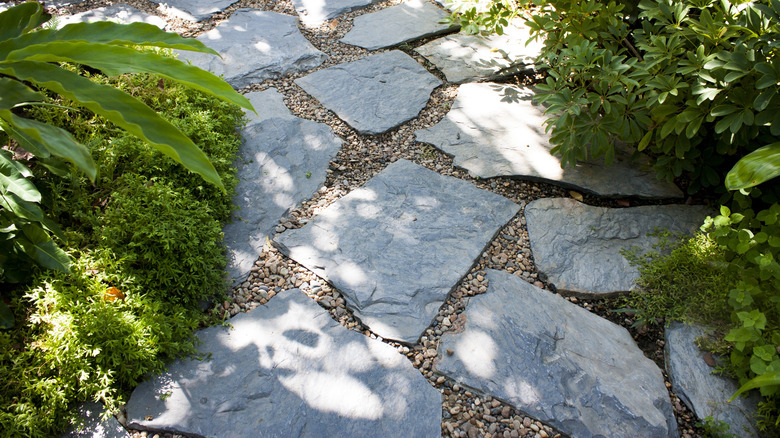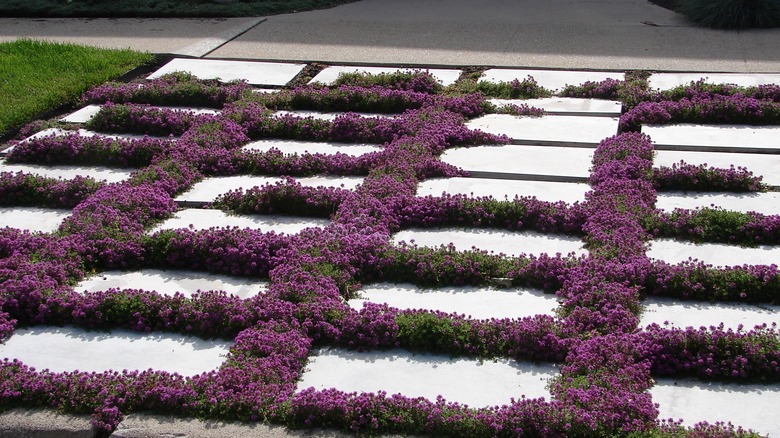How To Plant Creeping Thyme Between Pavers For A Gorgeous Landscape
There are so many DIY paver project ideas to elevate your yard and if you pick a design with intentional gaps in between, you want to fill it with something to prevent weeds from ruining the look. That's where creeping thyme (Thymus serpyllum) comes in. Not only does this semi-evergreen perennial smell amazing, but the plant also produces little pink or purple bell-shaped flowers in the summer that will add beautiful color to your space. To begin this project, you need to decide whether you want to use seeds to introduce the woody groundcover or add already grown plants.
Either way, creeping thyme only reaches a few inches high so the groundcover won't overshadow your paver project. The only thing you have to watch out for is the creeping part of the thyme, which can spread up to a foot. If you decide to add this plant between your pavers, you'll need to manually trim it to keep it looking neat and tidy. Other than that, creeping thyme takes little maintenance. It's drought-resistant, doesn't mind poor, rocky, or sandy soil, and it loves the sun. Plus, creeping thyme prevents weeds and will bring butterflies, bees, and other helpful pollinators to your landscape. All you need to start this project is some creeping thyme seeds or plants and a little time.
Creating your living landscape
To prepare the space between your pavers, make sure the area receives full sun and the gap is several inches wide. While the plant isn't picky about its soil, as long as it drains well, to successfully grow creeping thyme, the area will need at least six hours of sun and some space. Next, clear the gaps. You don't want your creeping thyme competing with other plants, so remove weeds from the soil and add compost to ensure good drainage.
If you're using creeping thyme plants, place them at least 6 inches apart and ensure there is enough room to bury the roots beneath the soil. Weed regularly as your plants grow together. After that, the groundcover will prevent any weeds from popping up. If you decide to use seeds instead, the project will be a bit more labor-intensive. Sprinkle the seed in the gaps, lightly cover them with soil, and keep them watered until germination, which should take a few weeks. Then back off the watering to about once a week. Keep a close eye on the area and remove any weeds that also appear.
Once the plants grow and fill the gaps, use scissors to keep them from spreading too far across the pavers, and trim the tops to ensure the thyme doesn't get leggy. While it might be tempting to use a weed whacker, scissors give you more precision and lessen the likelihood of over-trimming.

